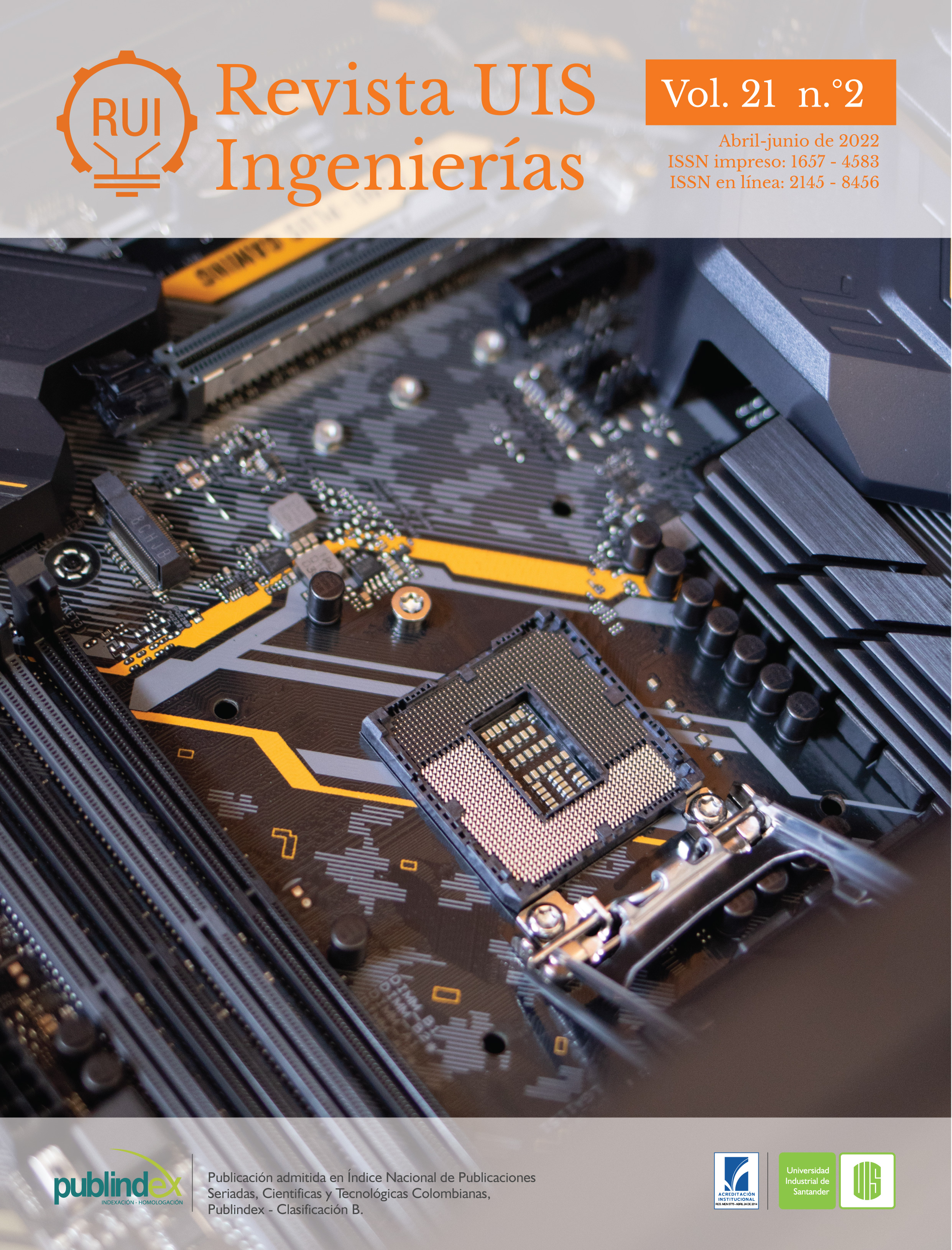Influence of the infill density and infill patterns on the compressive mechanical properties of 3D printed PLA specimens
Published 2022-04-05
Keywords
- PLA,
- Additive manufacturing,
- Compression test,
- Mechanical properties,
- 3D printing
- polylactic acid,
- FDM,
- infill density ...More
How to Cite
Copyright (c) 2022 Revista UIS Ingenierías

This work is licensed under a Creative Commons Attribution-NoDerivatives 4.0 International License.
Abstract
Fused deposition modeling (FDM) has a large number of parameters that directly influence the quality and mechanical properties of the final par. Currently, FDM additive manufacturing has shown a rise for prosthesis developments due to its low cost for their development with respect to other manufacturing processes. Additionally, this technology presents great interest to the area of medicine due to its ability to create customized solutions for each patient, the variety of materials that can be used, and the wide range of manufacturing and supply printers brands and materials for printing. This work investigated the influence of infill density and infill patterns on the compression values for maximum stress, yield stress and elastic modulus, in PLA specimens made by additive manufacturing by FDM technique. Densities of 10%, 25%, 50%, 75% and 100% and infill parameters Trihexagonal, Cubic Subdivision and Gyroid were used. All specimens were subjected to compression tests to calculate their mechanical properties and in general terms it was observed that increasing the infill density presents an increase in the compression properties of the material and that the geometry of the filling pattern can alter these properties.
Downloads
References
- W. Gao et al., “The status, challenges, and future of additive manufacturing in engineering,” CAD Computer Aided Design, vol. 69, pp. 65-89, 2015, doi: https://dx.doi.org/10.1016/j.cad.2015.04.001
- S. A. Vesga, “Fabricación de un prototipo de una prótesis de miembro inferior transtibial mediante tecnologías aditivas de acuerdo con las medidas antropométricas del paciente,” Ph.D. dissertation, Universidad Santo Tomás, 2018.
- C. I. López-Gualdrón, L. E. Bautista-Rojas, and J. A. Machuca-Gélvez, “Reconstrucción 3D para el desarrollo de prótesis de miembro inferior,” Revista UIS Ingenierías, vol. 19, no. 1, pp. 73-85, 2020, doi: https://doi.org/10.18273/revuin.v19n1-2020007
- D. Torreblanca Díaz, “Tecnologías de Fabricación Digital Aditiva, ventajas para la construcción de modelos, prototipos y series cortas en el proceso de diseño de productos,” Iconofacto, vol. 12, no. 18, pp. 118-143, 2016.
- Y. Huang, M. C. Leu, J. Mazumder, A. Donmez, “Additive manufacturing: Current state, future potential, gaps and needs, and recommendations,” Journal of Manufacturing Science and Engineering, Transactions of the ASME, vol. 137, no. 1, pp. 1–10, 2015.
- O. A. Mohamed, S. H. Masood, J. L. Bhowmik, “Optimization of fused deposition modeling process parameters: a review of current research and future prospects,” Advances in Manufacturing, vol. 3, no. 1, pp. 42-53, 2015, doi: https://doi.org/10.1007/s40436-014-0097-7
- M. Carvajal L, et al., “Influencia de la posición de impresión y la densidad de relleno en las propiedades mecánicas de probetas fabricadas en ABS,” Revista Ingenierías Universidad de Medellín, vol. 19, no. 37, pp. 179-193, 2020.
- M. Lalengani, M. Anuar Mohd, “The Effects of Combined Infill Patterns on Mechanical Properties in FDM Process” Polymers, vol 12, no. 12, 2020. doi: https://doi.org/10.3390/polym12122792
- M. León, Á. Marcos-Fernández, A. M. León, “Impresión 3D con materiales elastoméricos,” Revista De Plásticos Modernos, vol. 118, no. 747, 2019.
- A. K. Sood, R. K. Ohdar, S. S. Mahapatra, “Experimental investigation and empirical modelling of FDM process for compressive strength improvement,” Journal of Advanced Research, vol. 3, no. 1, pp. 81-90, 2012, doi: https://doi.org/10.1016/j.jare.2011.05.001
- A. K. Sood, R. K. Ohdar, S. S. Mahapatra., “Parametric appraisal of mechanical property of fused deposition modelling processed parts,” Materials and Design, vol. 31, no. 1, pp. 287-295, 2010, doi: https://doi.org/10.1016/j.matdes.2009.06.016
- J. C. Camargo et al., “Mechanical properties of PLA-graphene filament for FDM 3D printing” International Journal of Advanced Manufacturing Technology, vol. 103, no. 5, 2019, doi: https://doi.org/10.1007/s00170-019-03532-5
- A. Chalgham, A. Ehrmann, I. Wickenkamp, “Mechanical Properties of FDM Printed PLA Parts before and after Thermal Treatment” Polymers, vol. 13, no. 8, 2021, doi: https://doi.org/10.3390/polym13081239
- L. Baich, G. P. Manogharan, H. Marie, “Study of infill print design on production costtime of 3D printed ABS parts Study of infill print design on production cost-time of 3D printed ABS parts,” International Journal of Rapid Manufacturing, no. 3-4, 2015, https://doi.org/10.1504/IJRAPIDM.2015.074809
- ASTM D695, “Standard Test Method for Compressive Properties of Rigid Plastics,” ASTM International, pp. 1-8, 2010.
- D. Abbas, D. Mohammad Othman, H. Basil Ali, and C., “Effect of infill Parameter on compression property in FDM Process,” Int. Journal of Engineering Research and Application www.ijera.com, vol. 7. December, pp. 16-19, 2017, doi: https://doi.org/10.9790/9622-0710021619
- “Ultimaker Cura: Powerful, easy-to-use 3D printing software,” Ultimaker Cura, 2022. [En línea]. Disponible en: http://ultimaker.com/software/ultimaker-cura
- “Autodesk software de diseño 3D, ingeniería y construcción,” Autodesk Inventor, 2020. [En línea]. Disponible en: https://latinoamerica.autodesk.com/products/inventor

